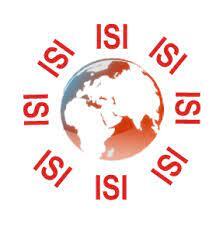The Impact of Change in Land Use on The Burden of Malaria in The Nyanza District
DOI:
https://doi.org/10.62103/unilak.eajst.9.9.102Keywords:
Land use change, Malaria burden, irrigated zone, mining zoneAbstract
The goal of the study is to assess whether the land use change has an impact on the malaria burden in Nyanza district by focusing particularly on two sectors located in the different geographical area of Nyanza district with the high prevalence of malaria. These are Busoro sector characterized by the presence of the large rice fields and dams and Nyagisozi sector, characterized by sand quarries and mining area. The choice of the sample representing the studied population is based on the main ecological activities of the man from 2012 to 2017 in these two sectors of Busoro and Nyagisozi where the cases of malaria are high. The data needed for this work was collected through secondary data from the Health Management Information System (HMIS) for malaria cases and administrative data for the mining and irrigated areas. The analysis was done for all months of the year. The summary provided for the year corresponds to seasonal malaria cases (SOND and MAMJ). Quantitative and qualitative data were analyzed using R, an open source programming language and a software environment for statistical computing and graphics. Time series analysis was used to verify non-stationary data. A multiple regression model was used to test the relationship between the variables. The results revealed a positive slope for seasonal malaria cases total for September to December and for March to June. In Busoro sector the study revealed, for September to December, the R-squared of 0.315 and the P-value 0.246and a correlation coefficient was 0.56. For March to June, the R-squared was 0.4548 with p-value equals 0.1418 and the correlation coefficient was 0.67. This fitting model assessing the evidence for chance for malaria cases over years and the moderate correlation between malaria cases and years. In Nyagisozi sector, the study revealed, for September to December, the R-squared of 0.6311 with p-value equals 0.059 and the correlation coefficient was 0.79. For March to June, the R-squared was 0.1267 with p-value equals 0.4886 and the correlation coefficient was 0.7. This fitting model assessing the evidence for chance for malaria cases over years and a high correction between malaria cases and years.
Based on the findings the conclusion is that the number of cases of malaria had increased over the years and stabilized in these sectors after the regular operation of mines and dams for irrigation and therefore the study confirms the impact of land-use change on the spread of malaria with high frequency of malaria transmission. Therefore, the study suggests that the effects of interventions should be concentrated on irrigation areas such as chemical spraying to avoid mosquito multiplication and mine exploitation, or even more in-depth research with data for a longer period.








